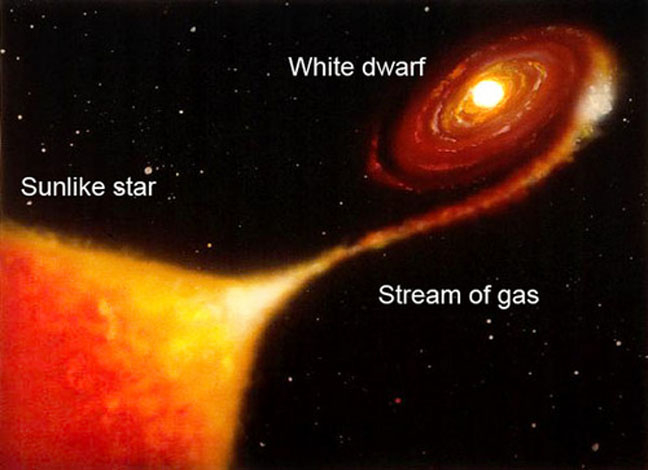
A Japanese amateur astronomer discovered new nova on October 25, 2016. It’s located in the direction to the constellation Sagittarius the Archer. It was visible only with optical aid at first, but now has now broken the threshold of visibility to the unaided eye. The nova has been labeled PNV J18205200-2822100.
Astrophotographer Jeff Dai wrote:
On November 16, I went back to the world heritage site Sukhothai in Thailand (17° N) to have a challenge. Venus, the evening star is my first guide, then the spout of the Sagittarius Teapot.
PNV J18205200-2822100 is in the famous Teapot asterism of the constellation Sagittarius the Archer. It is between the named stars Kaus Borealis (Lambda Sagittarii) and Kaus Media (Delta Sagittarii). Sagittarius isn’t far from the sun’s glare now; it sinks below the western horizon right after dusk, affording only a very narrow window for observing the from mid-northern latitudes. Southern Hemisphere is much better.
Because of light pollution from a nearby town, I could not see the nova with unaided eye, but I could see it in my photographs.
There’s still time to snatch a view of this amazing stellar event.
Thank you, Jeff!
You’ll find finder charts for the nova here
See Jeff’s earlier photo from Sukhothai, which also features Mars, Venus and Saturn

By the way, a supernova may be a star that entirely explodes, but the word nova is used to describe a star that suddenly increases in brightness, in this case becoming bright enough to view with the eye from Earth. Novae typically shine brightly for awhile, then return to their original state.
A classical nova occurs in close binary systems where one star is a tiny, dense white dwarf star. The dwarf pulls material from its companion star into a disk around itself. Some of the material from the disk falls onto the white dwarf’s surface and ignites, causing the flare-up in brightness we see.

Bottom line: Photo of nova PNV J18205200-2822100, discovered in late October, 2016. It has now crossed the threshold of visibility to the unaided eye, but is still very faint. You’ll find finder charts for the nova here.











